INTRODUCTION
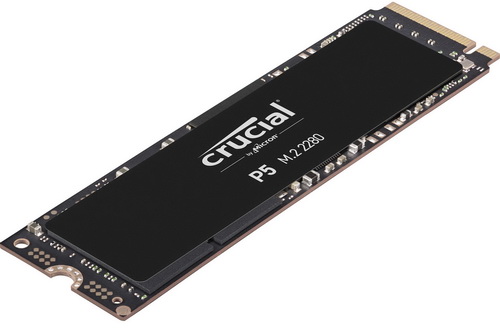
When i first got my hands on an SSD model back in 2007 (i think it was the SATA 5000 by Sandisk?) i thought it would just be yet another marketing gimmick like many of its predecessors since the 70's which never really took off. Slowly with the arrival of higher capacity and speed models (like the Phoenix by GSkill almost 2 years later) it became rather evident that SSDs were here to stay, at least 2.5" ones. Still even though we all did expect performance levels to surpass 10G eventually (1000MB/s) i don't think many of us were expecting to reach the levels we have today with some PCIe Gen 4 models even crossing the 5000MB/s mark. That being said PCIe Gen 4 motherboard compatibility is far from widespread as of now and so PCIe Gen 3 models still enjoy the highest popularity levels which is why today I’ll be testing the latest P5 model by Crucial in both 1TB and 2TB capacities.
Crucial is a global brand of Micron Technology, Inc. Crucial solid-state drives (SSDs) and memory (DRAM) upgrades are compatible with over 100,000 new and old desktops, laptops, workstations and servers. Crucial Ballistix gaming memory delivers a performance edge to gamers and enthusiasts and enhances the overall PC gaming experience. Available worldwide at leading retail and e-tail stores, commercial resellers and system integrators, Crucial products enhance system performance and user productivity. Learn more at www.crucial.com.
The P5 line of SSDs by Crucial (currently available in 250GB/500GB/1TB/2TB capacities) is the very first by Micron/Crucial to be based on their brand new DM01B2 eight-channel NAND flash controller (dual Arm Cortex-R5 CPUs) which they've paired with their third-generation 512Gbit 96L TLC NAND flash for the 1/2TB models and their 256Gb 64L TLC NAND for the 250/500GB models. All models are also paired with LPDDR4 DRAM by Micron (512MB for the 250/500GB models, 1GB for the 1TB model and 2GB for the 2TB model - clocked at 2133MHz) and as for their new NAND flash controller it comes ready with features like Dynamic Write Acceleration (SLC cache), low-density parity check (LDPC), active garbage collection, TRIM, SMART, Power Loss Immunity, NVMe Autonomous Power State Transition (APST) and Adaptive Thermal Protection (throttles performance when NAND temperatures exceed 70 degrees) and with full support for AES 256-bit hardware encryption, TCG Opal 2.0 and IEEE 1667 making it fully compatible with eDrive (Windows Bit locker). Last but certainly not least Crucial covers the entire P5 line with a 5 year limited warranty, reports an MTTF of 1.8 million hours and endurance numbers of 150TBW for the 250GB model, 300TBW for the 500GB model, 600TBW for the 1TB model and 1200TBW for the 2TB model.
SPECIFICATIONS AND FEATURES
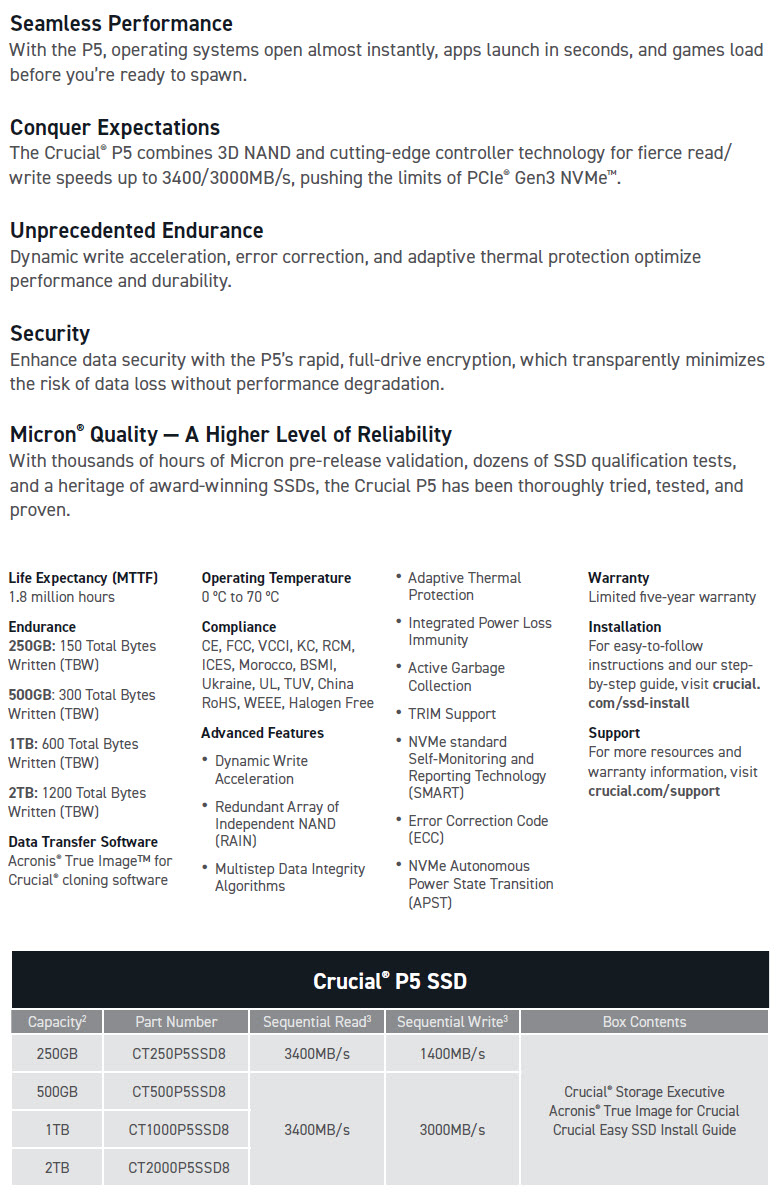
PACKAGING AND CONTENTS
Crucial uses their typical box to ship the P5 line in so at the front you can see their logo, the product name and of course the capacity.
At the rear Crucial mentions all the "extras" consumers will be getting with the P5.
The quick start guide is bundled along with each drive.
THE P5 1TB & 2TB
Both drives follow the typical 2280 standard (22mm in width and 80mm in length) and feature a nice black sticker at the top.
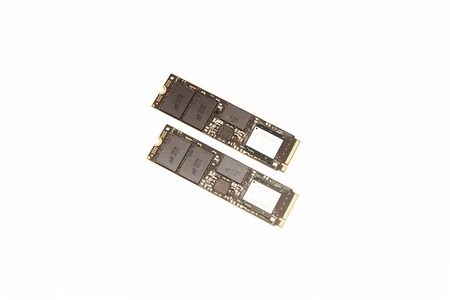
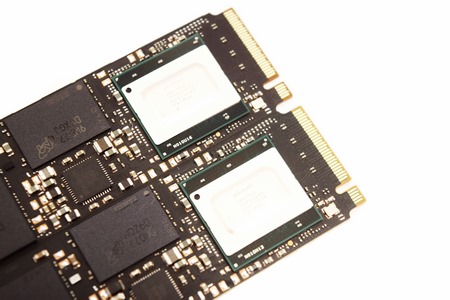

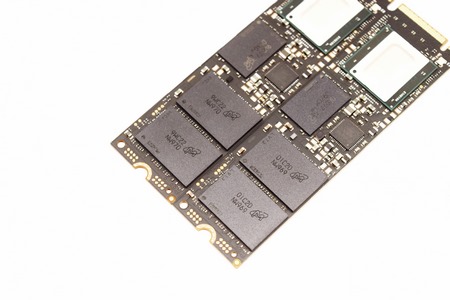 Beneath the sticker we find the DM01B2 NAND flash controller by Micron/Crucial along with a single LPDDR4 DRAM module (1GB for the 1TB model and 2GB for the 2TB model) and two 512Gbit 96L TLC NAND flash modules (512GB each for the 1TB model and 1024GB each for the 2TB model).
Beneath the sticker we find the DM01B2 NAND flash controller by Micron/Crucial along with a single LPDDR4 DRAM module (1GB for the 1TB model and 2GB for the 2TB model) and two 512Gbit 96L TLC NAND flash modules (512GB each for the 1TB model and 1024GB each for the 2TB model).
The opposite side of the PCB is completely empty and only has a sticker with information like the firmware version, capacity, country of origin and various logos printed on it.
CRUCIAL STORAGE EXECUTIVE
You can download the Crucial Storage Executive software from the manufacturer website.
The initial screen gives you details on your system memory and of course on the SSD installed (these screenshots were taken on the Z390 test rig while the 2TB model was being benched on the other one).
The software also allows you to check the drives details including its SMART page.
Our samples arrived with the latest firmware installed.
From the sanitize tab you can erase everything on the drive.
PSID revert is not a feature supported by the P5.
Momentum cache may improve the performance of the drive by taking and using a piece of your system RAM.
Flex capacity is yet another feature not supported by the P5.
You can try and improve the performance of the drive by using the over-provisioning feature (this will eat some of your empty drive space however).
The self-test can come in handy if you have issues with the drive.
Namespace is also not supported by the P5.
TEST BED
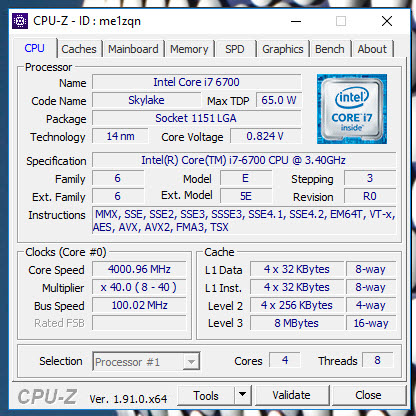

TESTING METHODOLOGY
After over 12 years of testing solid state drives, i’ve concluded that it's almost impossible for any single benchmark suite to accurately measure their performance and that's why in certain benchmark suites we see amazing read/write performance numbers with some drives while in others things are quite different. The reason behind this is that some benchmarking suites are configured to read and write random chunks of data while others read and write constant (sequential) ones. So that's why i always use a very wide selection of benchmarking suites including AIDA64, HD Tach RW, HD Tune Pro, Crystal Disk Mark, Sisoftware Sandra Pro, AS SSD, IOmeter and ATTO. To get the most accurate results each test gets repeated a total of 6 times with the average performance numbers recorded into our charts*. Also, as of February 25th 2015 our results will also include the Storage Networking Industry Association’s (SNIA) IOMeter tests. These tests include a 12 Hour write test used to “simulate” performance degradation over time and a mixed workload test which basically shows what you can expect when using an SSD continuously for roughly two hours. Unfortunately, due to the time required for these tests we repeat them a total of 3 times and not 6 as the above.
Many people have made inquiries about our charts in the past so once again please do keep in mind that the Charts have the average performance numbers of each drive recorded and not the peak (highest) ones. Also, although every single one of these programs can help potential buyers choose the right drive for their needs you should also remember that from any kind of benchmark up to real world usage the gap is not small (and usually most differences will go unnoticed by most people). All tests were performed in a fresh Windows 10 Pro x64 installation complete with every update up to the date of this review.
* Since November 2018 our SSD comparison charts have been divided to 2.5” and M.2 models to reduce their growing size.
** Unless stated otherwise the Ryzen 9 3950x based Test Rig used for M.2 Gen 4 SSD reviews is not located in the lab.
TEST RESULTS - AIDA64 / ATTO
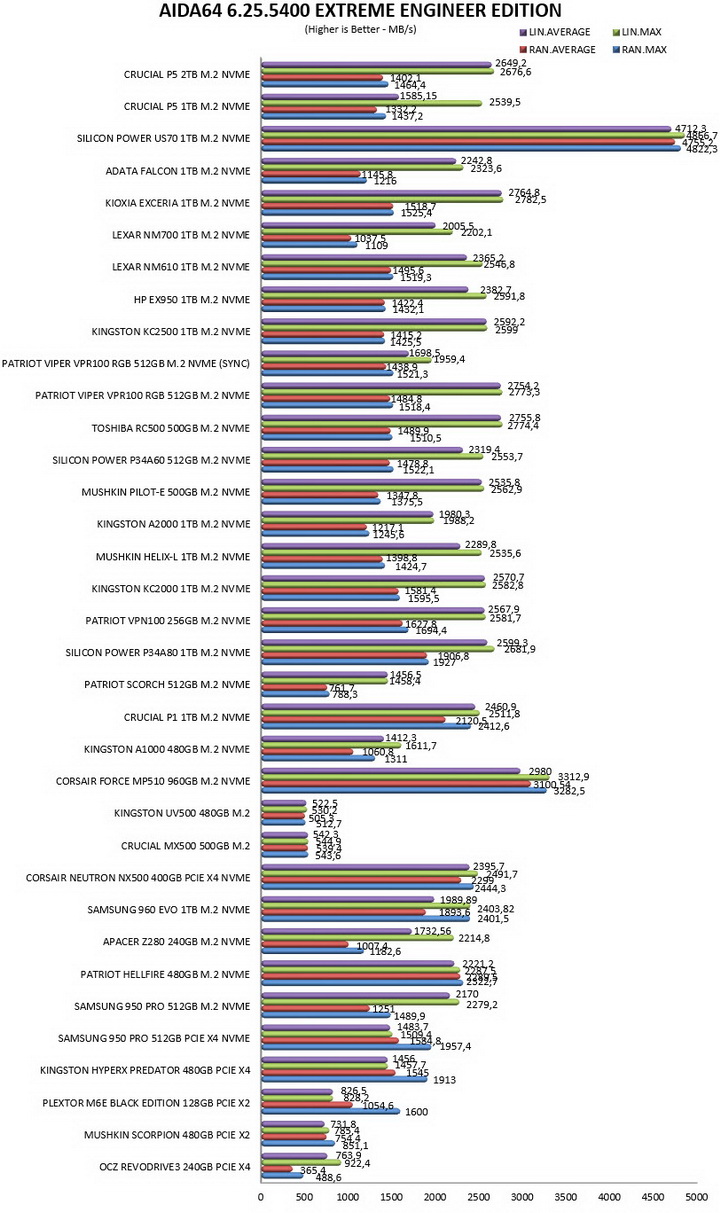
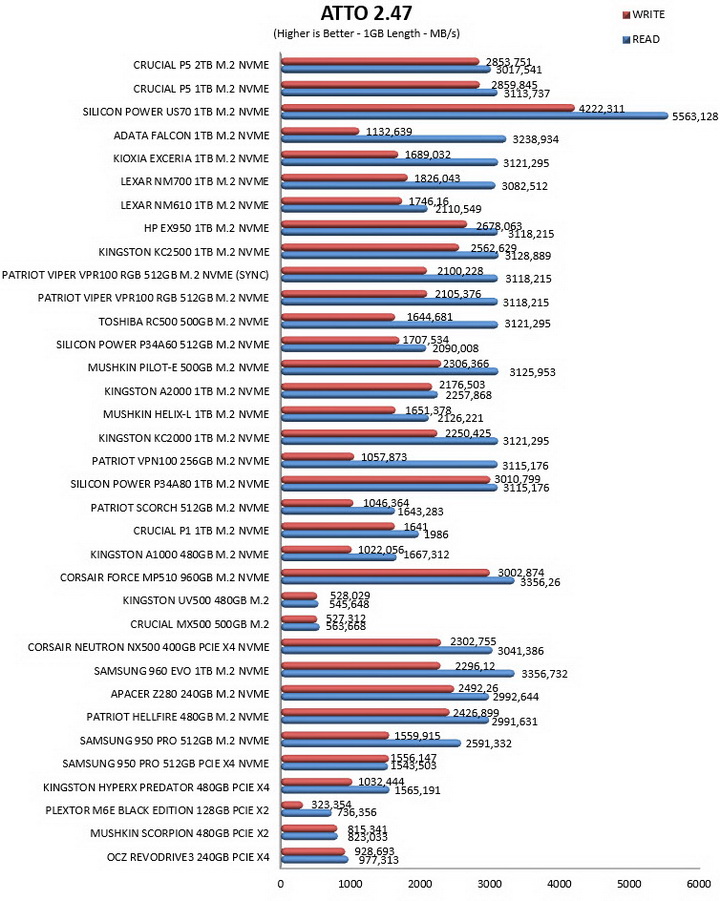
TEST RESULTS - HD TACH RW / HD TUNE PRO
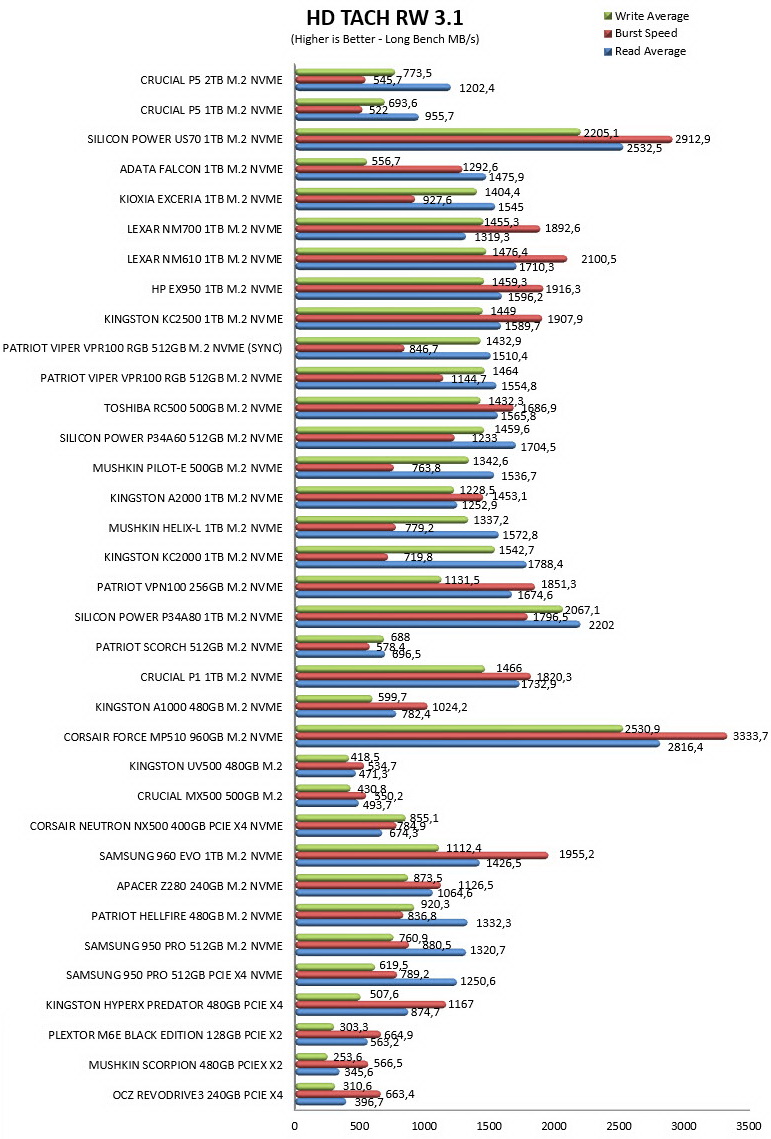
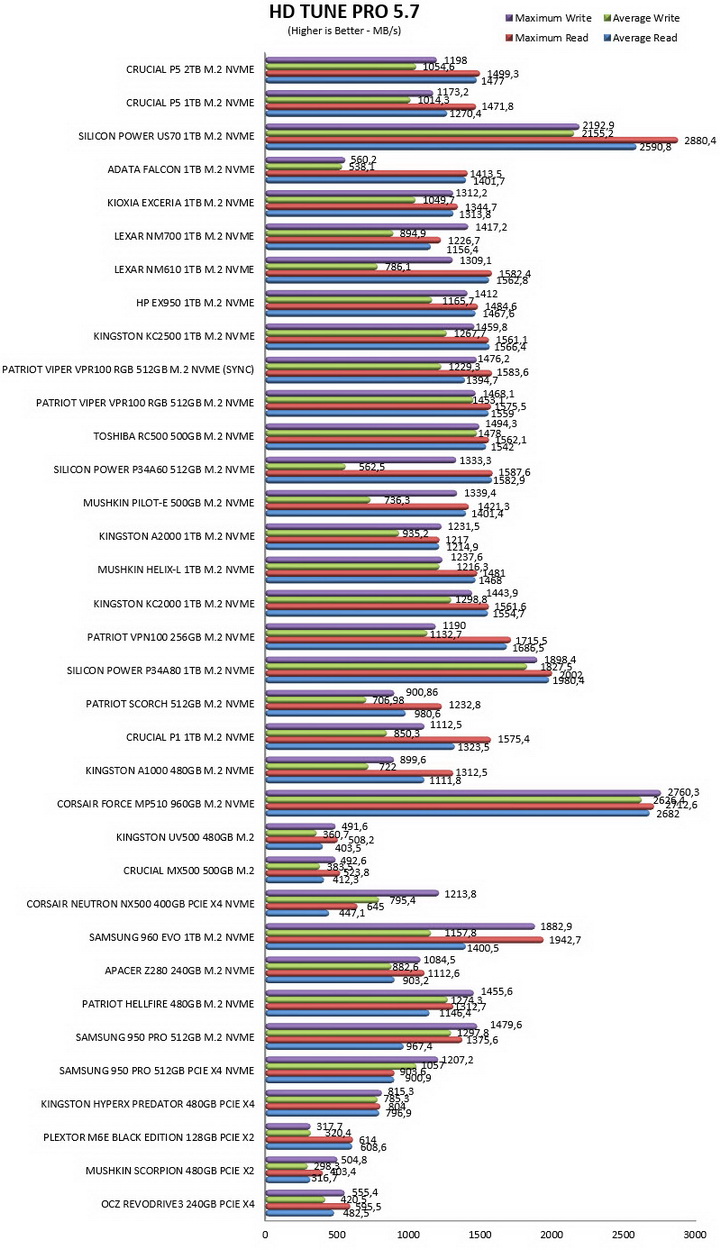
TEST RESULTS - SISOFTWARE SANDRA PRO / CRYSTAL DISK MARK
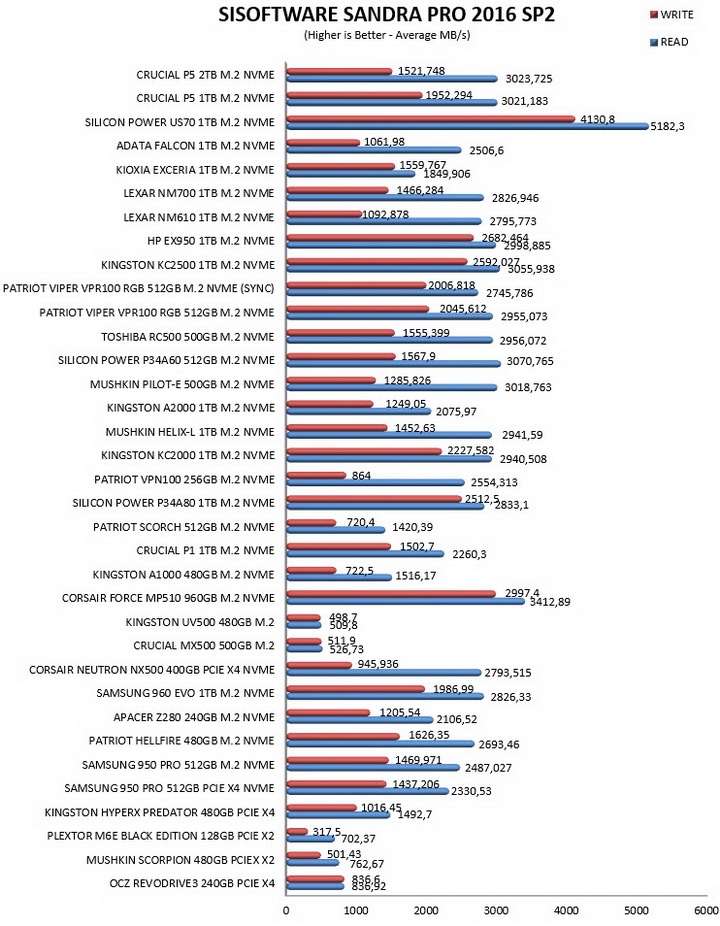

TEST RESULTS - AS SSD / IOMETER
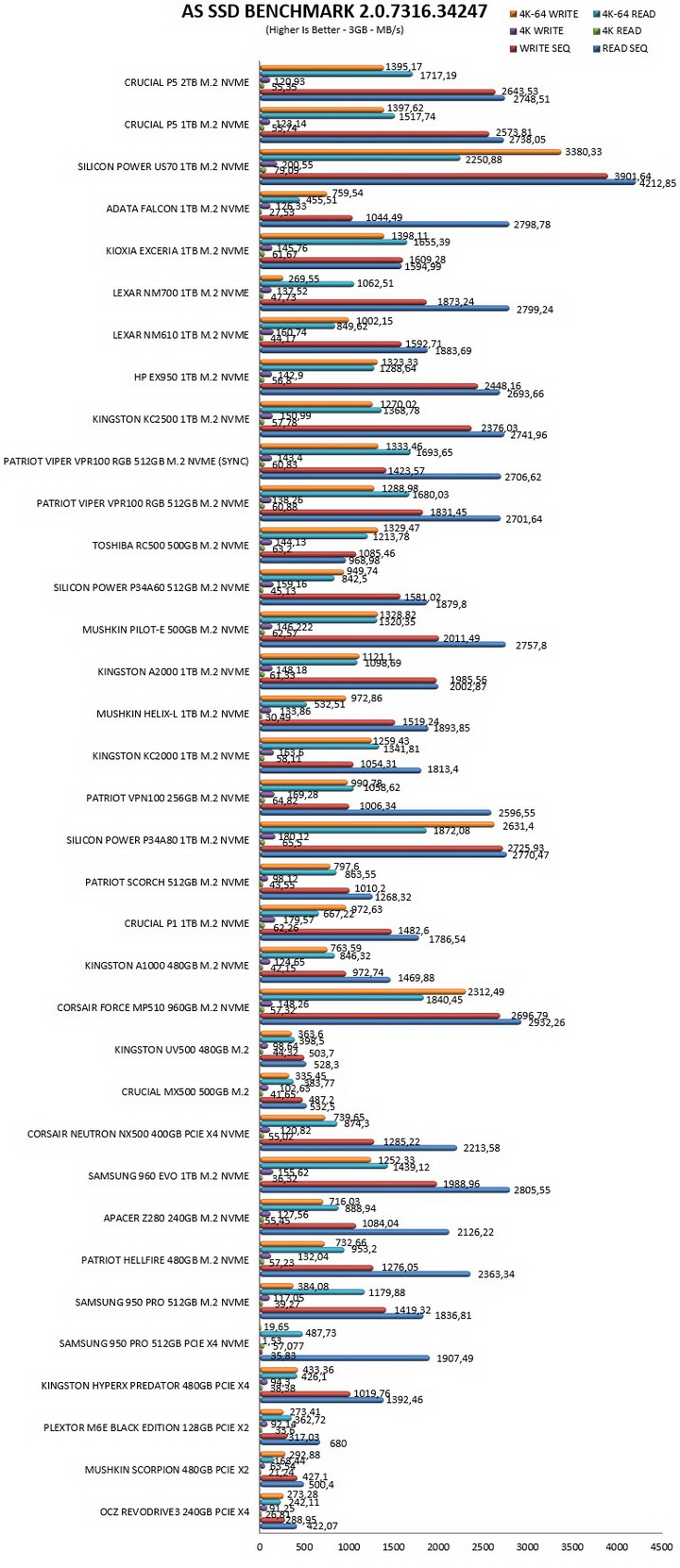
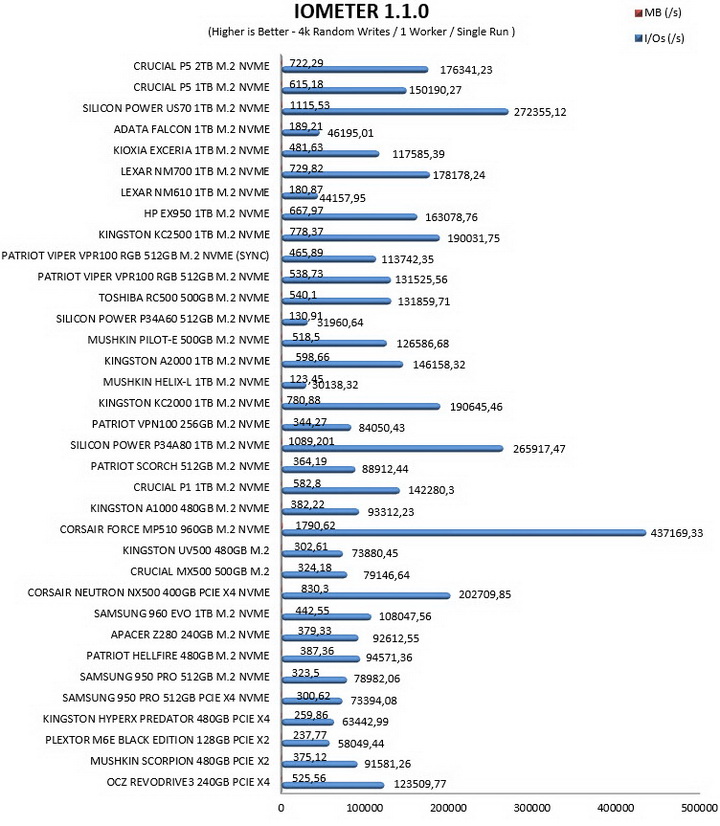
TEST RESULTS - IOMETER SNIA
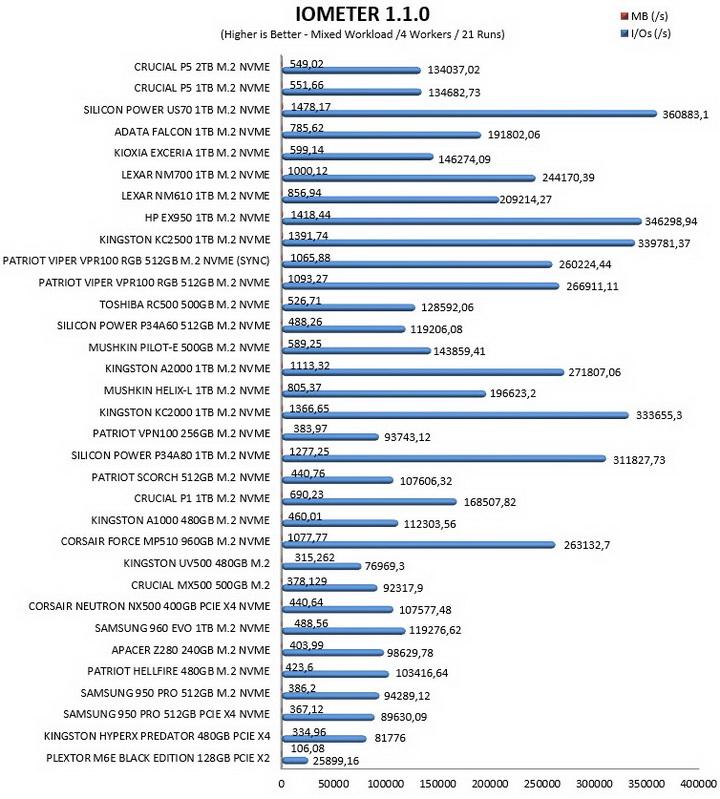
CONCLUSION
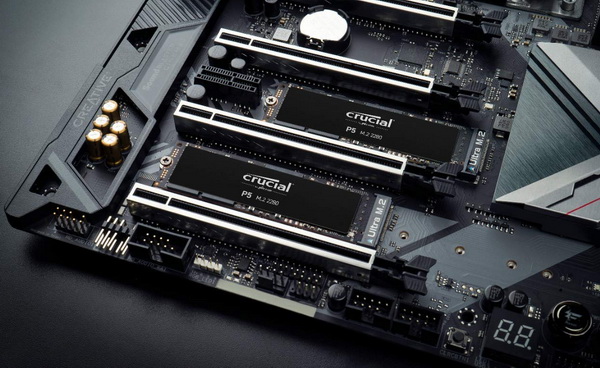
The P5 is not only the newest SSD line by Crucial build around their very own NAND flash controller (thus this SSD line is 100% manufactured by Micron) but it’s also their flagship one and with advertised read-write speeds of up to 3400-3000MB/s that does make sense. Unfortunately, as you can see from the charts i was unable to hit 3400MB/s in reads during my test but i did surpass 3000MB/s for both (the 2TB model offered better results overall) and that’s a very good result (even though as expected it’s wasn’t constant). In terms of endurance what the P5 line offers is pretty much standard since we see these numbers a lot by similar Gen 3 models. The 5-year limited warranty again may not be something entirely new but it’s not nearly as common so thumbs up to Crucial for that.
At the time of this review the 1TB variant of the P5 M.2 NVMe SSD by Crucial retails for USD149.99 inside the USA (Amazon.com) and for 148.45Euros inside the EU (Amazon.de) whereas the 2TB variant retails for USD339.99 inside the USA (Amazon.com) and for 320Euros inside the EU (Amazon.de). This may not be the most appealing price tag around but it does land the P5 1/2TB models on the lower end of what similar performance models go for so that’s actually good. So, since the P5 1/2TB models check all boxes needed such as good performance and endurance levels, warranty and price they get our Golden Award (all that’s left now is for Crucial to release a Gen 4 model).

PROS
- Overall Performance (Up To 3400MB/s Read & 3000MB/s Write)
- Endurance (600/1200TBW)
- 5 Years Warranty
- Crucial Storage Executive Software
- Price (For Some)
CONS
- Thermal Throttling (During Our SNIA Tests)

 O-Sense
O-Sense





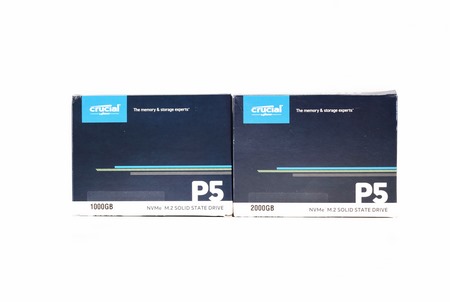

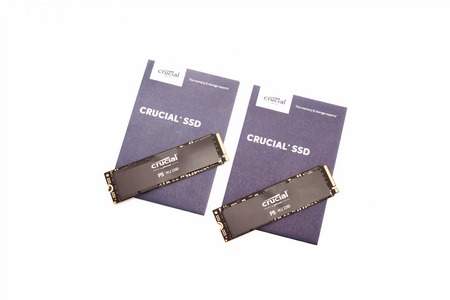
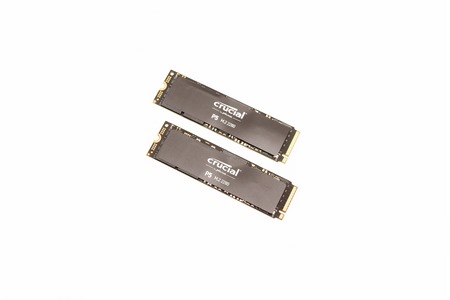



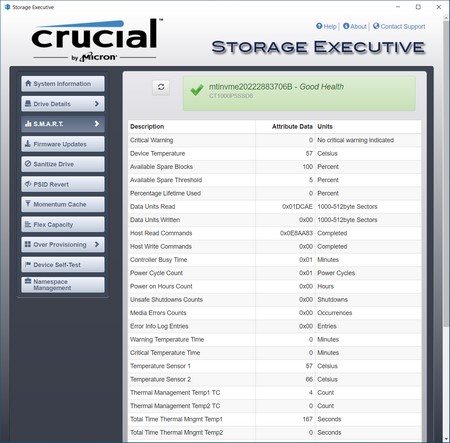
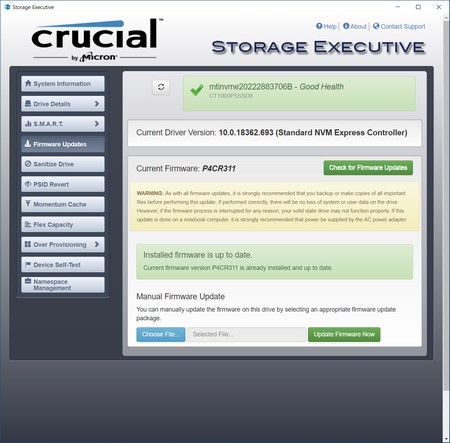
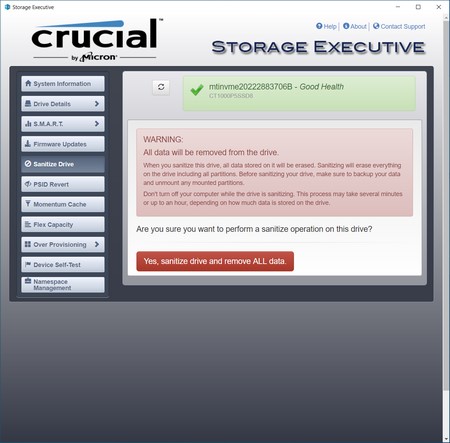
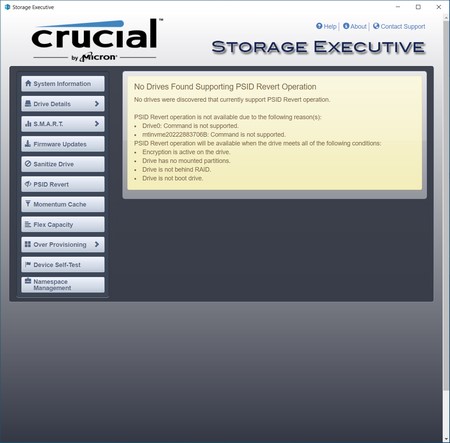
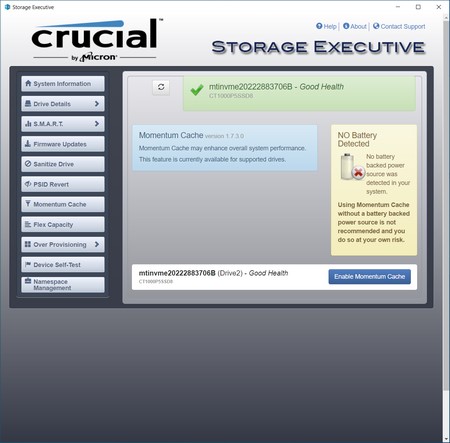
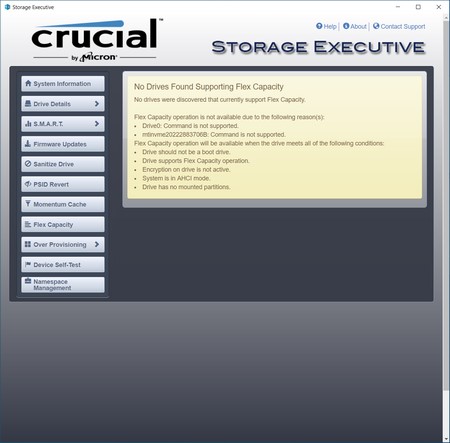
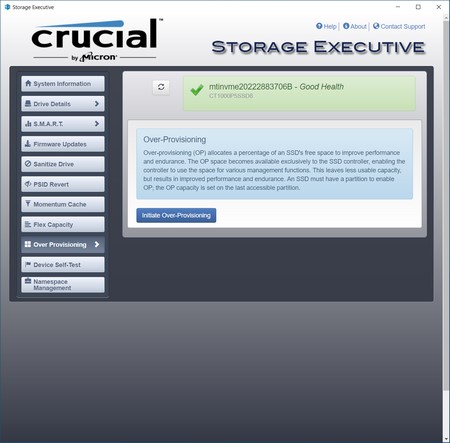
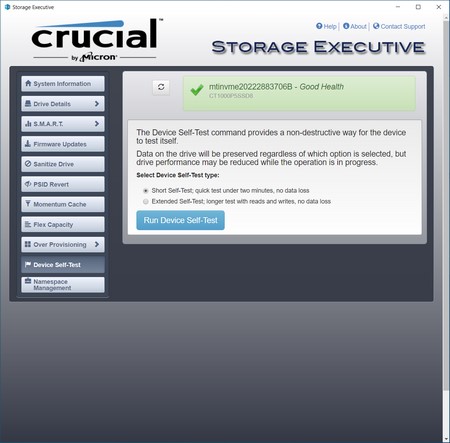
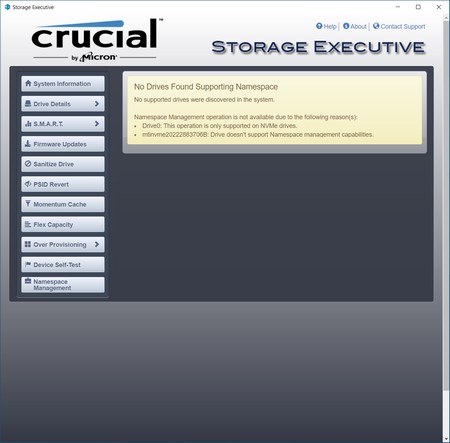
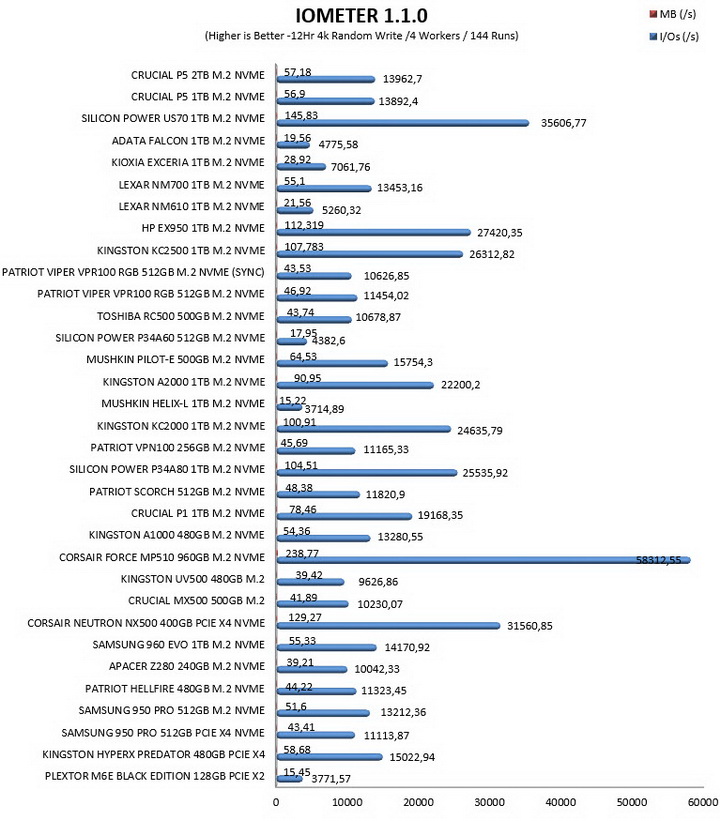



.png)

